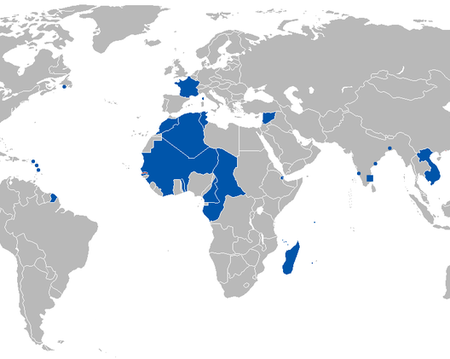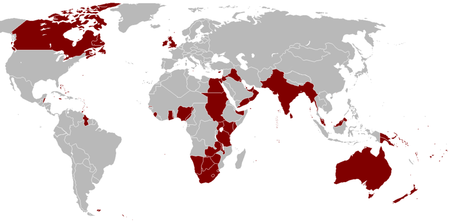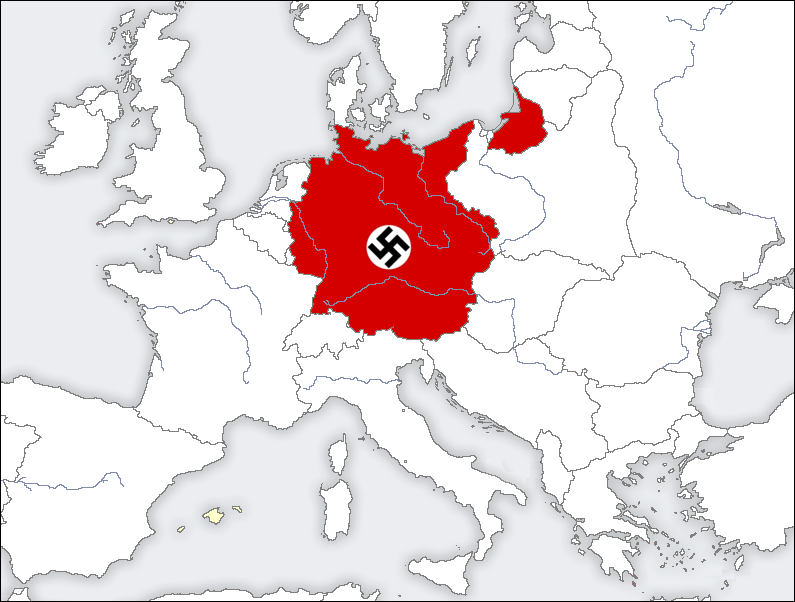AHC: Optimize the Italian military for ww2.
You have three problems.
Geographic:

That is your geopolitical position.
This is your main economic and political competitor.

This is your enemy.

This is your actual main military and political threat to your national existence.



Italy is surrounded and has adversaies, the four most powerful military states *(on paper) of the planet set against her by geographic location and position.
===========================================================================


Now let us look at her material resource potential?
a. mercury
b. sulfur
c. zinc
d. bauxite
e. pyrite
f. feldspar
g. pumice
h. marble
i. potash.
Iron is mineable from the flanks of active volcanoes in Italian territory but is heavily sulfur contaminated and would produce brittle steels. Oil is (American) suspected in Libya but is DEEP, I mean Texas deep, and is unobtainable by 1930s European technology.
Italy’s terrain is mostly mountainous, its land is not suitable for farming, and only 26.41 percent of the land is considered as arable. It can barely feed its mostly agricultural based economy and human population.
============================================================================
Industrial base.
a. Shipbuilding was technologically better than France and Germany (and Britain); but it was small in output compared to her European competitors. As a base rule of thumb, figure 2/3 dockyard capacity of France, but far faster and more efficient in construction times per unit built. That meant, by capacity, the British can 3x the Italians in output in an arms race, even if the Italians did produce superior ships, class for class, both of commercial and warship variety.
b. The aircraft industry was fragmented and chaotic. It was era competitive with the French, but about a half decade behind the world technology leaders, the United States and Germany.
c. The automotive industry was misjudged and misrepresented in WWII histories. Like shipbuilding, this area was actually technologically competitive, but it was incredibly small in size. To give some idea of how small, JAPAN had a bigger automotive industrial base in 1939.
=============================================================================
Human capital.
a. Only 3% of Italians were college educated, but these people were SHARP. If not for Fascist politics and the corruption of the 1%er ruling Zaibatsu classes, the "middle manager" potential of this Italian human capital would have paid huge dividends with the available means Italy had.
They were more solutions efficient than the Germans.
b. The general population had only a 60% literacy rate and I mean the ability to read and write "Italian", and then I mean either Neopolitan or Lombard. The dialects and grammars were so different that south Italians had trouble understanding north Italians. That problem was not sorted out until after WWII and is still a source of intense Italian political problems.
c. There were few mechanics and industrial workers able to handle routine tasks, such as fixing a car, or even an internal combustion engine.
=============================================================================
Take the above brief sketch and add these military and political matrices.
a. Mussolini was a failed newspaper editor, a failed sergeant, and a gangster. He thought he knew about the Italian problems on land at Isonzo and was aware at the line soldier level of the situation the Italian army had found against an entrenched Austrian enemy in mountainous terrain, but beyond that simplistic view, he was an ignoranti. He was not a geopolitician, or much of a strategist, and knew very little about the operational art. He sold favors and was easily swayed by gaudy simplistic political arguments. He was a short-term opportunist who had no capacity whatsover to plan deeply or long range into the future. He could not team build and he lacked IMAGINATION to project outcomes.
b. Everybody European had the officer and enlisted soldier caste system inherited from feudal antecedents; but in Italy this was especially pernicious as officers earned / gained their ranks, either through outright bribery or political connections or through blackmail of their superiors. In this environment; moreso than in Russia or France, America or Britain; the incompetents, who could game the system, obtained the senior commands. The Italians accepted this handicap as the cost of doing business, but they tried, Germanlike, to graft good staff officers onto these
letame per cervelli, as aides and executives who handled the detail work. These staffers were the ones who made Rommel's Afrka Korps logistics work and who managed to keep Italy's ramshackle war machine going a full year longer than it had any right to endure.
c. Italy's NCO corps was almost Russian awful. It was not that the Italian military did not know how to build sergeants; it was that
they could not take a plowboy and turn him into both a squad leader and a technician. They had that language problem and the massive illiteracy problem to overcome just to teach a sergeant how to read an instruction manual. People management could be rote-instructed (The Russians and Japanese did that process with their illiterate goon sergeants.) but knowing how to operate a machine gun and how to site it, required the ability TO READ. What an American private or corporal could do, the Italians had to assign to staff sergeants, who had learned enough reading and writing and spent enough army school time to learn how to read those maps, and those training manuals. That left no other time for fireteam, squad or platoon leadership schools in the career tracks. Hence low ranking Italian officers, like Russian officers, tended to do sergeants' leadership work, and those nincompoops tended to do it badly, because
they were not of the line soldier class. The thing that made sergeants work as leaders was that they were not "aristocratic snobs" who regarded privates as scum. They were of the same "class".
"Don't call me, sir. I work for a living." Try to get an Italian or Russian officer to empathize with a line soldier's concerns about mail, getting decent food or even enough water to drink, much less scrub the dirt off the private soldier's hands and face. It did not happen, because there was no trained sergeant or petty officer class, the officer had to respect, to teach the stupid ensign or lieutenant or captain about such vitally important things.
I could write more about these human factors, but you get the idea of what needed fixing? (^^^)
=======================================================
How about fighting tools?
Well... depending on what tools were used, the Italians arrived somewhere between imitative and orignal, as a cross between British and French engineering, with more than a few nativist touches and the occasional German or American tweaks.
a. Italian land artillery tended to either be Schneider or Skoda inspired.
b. Their naval artillery was definitely British in concept, but tended towards higher muzzle velocities, lighter shells and more salvo dispersions. This was inherent in British artillery technology to begin with, but Italian quests for longer range made it worse than even in the WWII era.defective British RN guns.
c. Arguably Italian torpedoes were the best in Europe. They were poorly used, but when the Americans got a look at the Fiume line of fish: well, Yankee see, Yankee do. And as for UDT and scuba work, expletive delete anybody else. The Italians were the teachers, not the pupils.
d. I never understood the Esercito's choices for machine guns. The Regia Aeronautica had stolen the Browning .30 and .50 designs. Those machine guns worked well for them as aircraft weapons. The Italian army troops, when they could, replaced their crappy Bredas with such Brownings stolen off Italian planes; so it was likely a political malfeasance decision and not a logical military practicality one.
e. In 1938 or thereabouts, the Regia Aeronautica embarked on their 3,000 plane modernization program. Fine. It was customary for most countries in that era to upgrade or refurbish some equipment every 5 years (Except for the United States, stuck as it was on stupid.). Part, of the Italian air force's modernization program, was a Mussolini-mandated decision to use only radial engines. There was a big problem with this Mussolini manure-for-brains decision. Italy did not have a nativist designed line of radial engines that could generate the predicted 1200 HP (894 kW) rates that would be needed to be competitive with the expected British and German aircraft coming into service. Italy "could" get the watts with a line of Alfa Romeo liquid-cooled Vee engines under development; or license some engine designs from an eager-to-export and license Mercedes Benz which had developed the MB600 aeroengines series, but Bennie had followed the "obvious solution" to manufacture "simple air-cooled radials" to avoid the needed Italian investment in complicated research and development of glycol-water cooled engines.that the British and Germans made.
As an aside, another nation that bungled its aeroengine program was the UNITED STATES and for exactly the same reasons. Where were the Italians to get or license build air cooled aeroengines in the 900 kW range? Where indeed? Germany? They were trying but their own radial engines would not be ready until 1940 and most of them were crappy overweight designs anyway.
There were two immediate sources: Britain and France. Hispano Suiza and Bristol were sought out and the Italians received the rights to make 600 kW second-rated engines. Now you understand why the Italians made all those trimotor medium bombers and why their fighters were undepowered and performed poorly at high altitude until the concerns like Fiat, Alfa Romeo and Isotta Fraschini got the rights to build Mercedes MB6xx engines?
========================================================
Everybody's WWII favorite... tanks:
a. If you looked at an Italian WWII tank or semovente; you saw a Fiat-evolved copy of a Carden Lloyd tankette, circa 1930ish. The British tank was a piece of crap, but that was where the Italians started. By a long torturous independent parallel process of evolution; the Italians created a mirror-evolved Vickers 6 ton type tank that they called the L6/40.
b, It came into service at about the same time as the British came out with their cruisers Mark III / IV / V and the Matilda II and the first Valentines. ALL of these tanks were near equals to each other in the guns-armor-mobility composite matrices. The Italians had a better gun, and their tanks were better built and FAR more mechanically reliable; but the British had better armor plates, radios (Which did not at all work well, but at least they had them and could occasionally talk to each other.), and the British made a LOT of them by even German standards. So, the "brittle-like-glass steel plate" armored, flag-waving-to-communicate-with-each-other Italian tanks received a bum rap as poorly designed monkey-copy tanks. A more deserved accurate rap, is that the Italian tanks had poorly annelled brittle armor and not enough of them could be built, that they had no radios and were more size-restricted, and so were more ergonomically handicapped with 2 man turrets than most British tanks: but that description is a lot more different than being categorized as "imitative second-rate junk copies of British tanks". British tanks of the era, were called by the British, "junk" and THAT is a fair criticism of those badly-designed and built death-traps. Unlike the Italians, who had not the experience or the industrial base to do any better, the British should have excelled in tank-building. Along with the French the British co-INVENTED the tank.
c. Self-propelled tank destroyer: Semovente. Time was not on your side, you had a small automotive industry and you needed to figure out how to stop enemy armor? I'm fairly sure that
the Italians were aware of This.


The 84 mm / 20 Birch gun was self-propelled artillery, but it was not a great leap forward to this:

You should read British accounts of how a very few of these "abortions" tore them up in 1942. The Italians used a pernicious nvention of American devising called the "hollow charge shell"; based on the Munroe Effect. Anybody could read about it in Scientific American around 1898. One of the BAD effects of such a combination of a low velocity howitzer, a STUG-like contraption to carry it and brave well-trained Italian artillerymen, was that if you parked a battery of these things on a slight rise behind a minefield and then you waited for the British to charge you, you could do interesting unpleasant things to them. After you wiped out the British tank troop by killing the tank crews through concussive shock that flaked off razor blade shards of British armor plate splintered from the inside facings of their tanks by hollow charge "effecto pronto" shells, which are not exactly like high explosive squash head (HESH or plate cracker); or high explosive anti-tank (HEAT or self forging penetrating jet of molten metal.); chopping the poor men iinside into hamburger meat, then you addressed the British infantry. Those poor blokes you greeted with giant shotgun shells from the same howitzers direct-fired into their walking pace advance behind their now dead armor. A horrible outcome was guaranteed; if you were the British. That only happened twice; fortunately.
Notice the Semovente had a RADIO.
Call fires were possible by Italian forward observers; so ypu could add indirect time on target high explosive barrage fire to the joys the semoventes could bring to the battlefield.
=======================================================
You have to do something like that (^^^), bottom to top, hundreds of times all across the entirety of Italy's too numerous problems, but first get rid of Mussolini to begin to fix Italy. Then the Italians have to play armed neutral, like Sweden, and STAY OUT OF THE WAR for as long as they can, only joining in when the Germans inevitably attack them.
Then I give them odds of 50 / 50 that they survive better than they historically did. They will be invaded and they will be chopped up. They are in a bad position with geography and resources. Their one hope is to use their human resources better and make better political choices than historically, but even that change might not be enough.
Miletus













